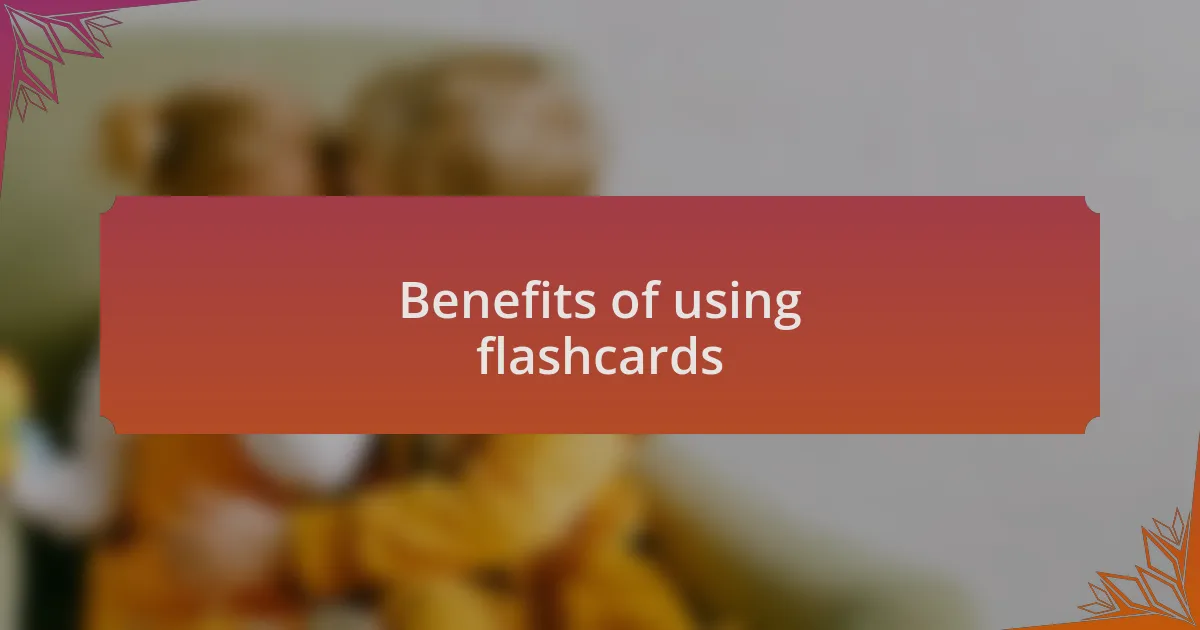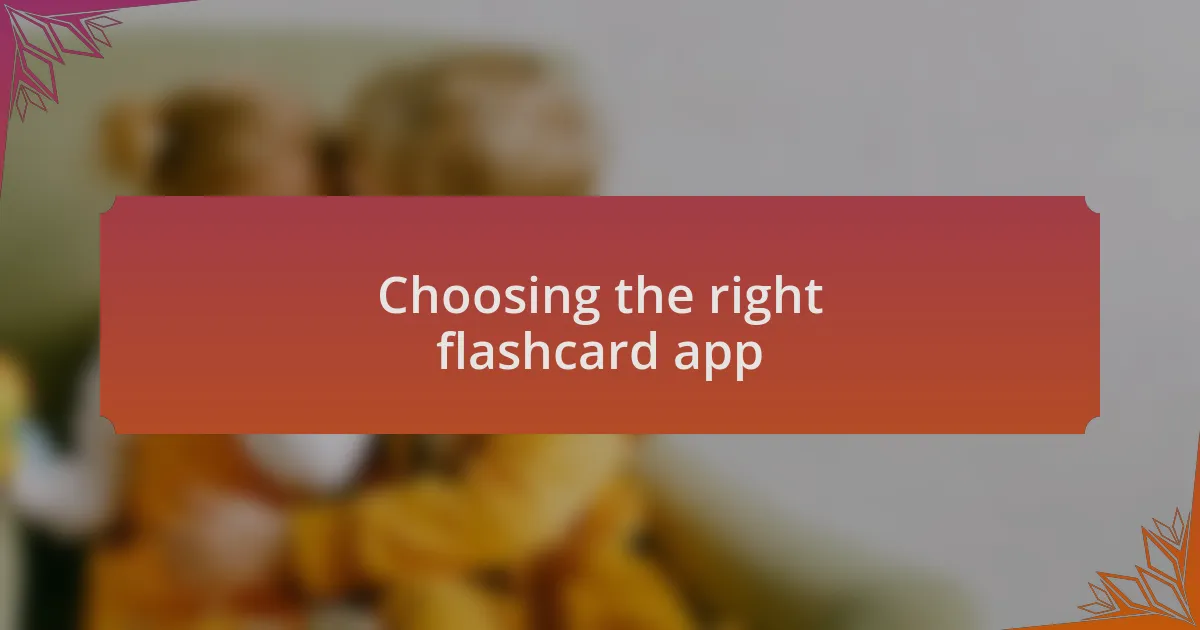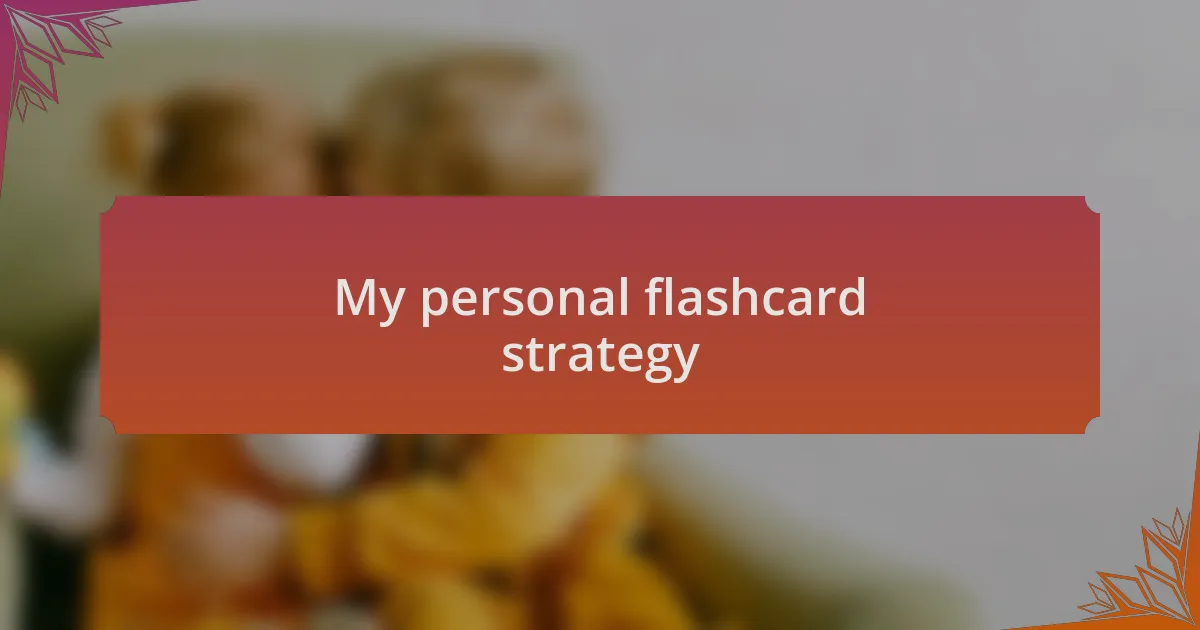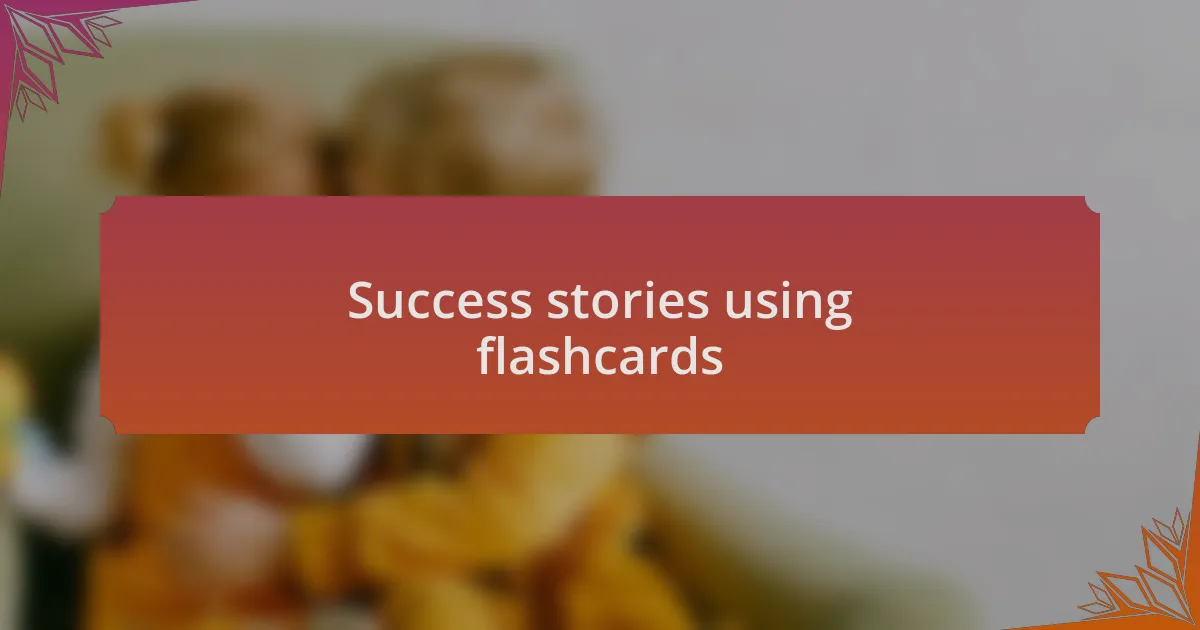Key takeaways:
- Digital flashcards enhance learning through customization with multimedia, spaced repetition, and accessibility.
- Tracking progress and personalization in flashcards significantly boost motivation and retention of information.
- Creating effective flashcards involves simplicity, the use of visuals, and consistency in design.
- Collaborative learning and a personalized approach can lead to remarkable improvements in comprehension and confidence.

Understanding digital flashcards
Digital flashcards have transformed the way we approach learning. I remember the first time I used them; it was a game changer for my study routine. The ability to customize cards with multimedia elements—like images and audio—made studying not only efficient but also more engaging. Have you ever noticed how a visual cue can trigger a memory far more effectively than text alone?
These tools utilize spaced repetition, which means they present information at intervals optimized for long-term retention. I found it fascinating how I could observe my progress, often smiling as I realized I remembered concepts that once felt overwhelming. It’s empowering to see that growth reflected in my stats, isn’t it?
Moreover, digital flashcards can be accessed anywhere, anytime. I often used them while waiting in line or during short breaks. This flexibility means that learning can happen in those little moments we often overlook. Isn’t that a brilliant way to maximize our time?

Benefits of using flashcards
Using digital flashcards has streamlined my learning process in unexpected ways. For instance, I once struggled with vocabulary when studying for a language course, but creating flashcards helped me internalize words much faster. The satisfaction of flipping a card and recalling a word was exhilarating; it felt like unlocking a new level in a game.
One benefit that truly stands out to me is the ability to track my progress over time. I remember the excitement of seeing my accuracy improve after several weeks of consistent review. It not only motivates me to keep going but also provides a sense of achievement—much like checking off items on a to-do list, each improvement fuels my desire to learn more.
What I appreciate most is the customizability of digital flashcards. I can add my own notes or even voice recordings to capture nuances that might be lost in a textbook. Have you ever found that personal touch in your studies makes all the difference? The personalization transforms the learning experience, turning it into a journey that feels uniquely my own.

Choosing the right flashcard app
When I began searching for flashcard apps, I quickly realized that not all apps are created equal. It’s essential to choose one that fits your learning style. For instance, I gravitate toward apps that offer spaced repetition, as this technique has significantly enhanced my retention. Have you considered how the method of learning impacts your memorization?
Another factor I take into account is the user interface. I’ve encountered apps that felt clunky and overwhelmed me, detracting from my focus. After trying a few, I found that a clean, intuitive layout helped me stay organized and engaged. Isn’t it interesting how a well-designed app can make learning feel less like a chore and more like an enjoyable experience?
Finally, I recommend checking for community features or options for shared decks. I once discovered an app that allowed me to access flashcards created by other learners, which broadened my understanding immensely. Have you ever thought about how collaboration can enhance your learning journey? I certainly have, and that shared knowledge has helped me make connections I wouldn’t have found on my own.

Creating effective flashcards
When creating effective flashcards, I often emphasize simplicity. Each card should convey a single idea or concept, which helps avoid overload. I remember initially cramming multiple facts onto one flashcard and feeling completely lost during review. How can we expect to learn effectively when our materials are muddled?
In my experience, using images or diagrams alongside text has also made a significant difference. A flashcard featuring a visual representation not only captures my attention but also aids in memory retention. I still recall a particular flashcard with a colorful diagram that helped me understand a complex topic; it was so much easier to remember than just words alone. Have you ever noticed how visuals can transform dry information into something memorable?
Consistency is another key element. I like to stick to specific colors or themes for related sets of flashcards. This practice has given my study sessions a sense of structure and organization. I find that when I see a particular color, it instantly brings to mind the related concepts, anchoring my memory. Isn’t it interesting how something as simple as color coding can facilitate learning in a powerful way?

Tips for using flashcards efficiently
When using flashcards, timing your review sessions is crucial. I’ve noticed that spaced repetition, where you revisit cards at increasing intervals, has really solidified my retention. It’s fascinating how our brains benefit from repetition over time rather than cramming, don’t you think?
Another tip is to actively engage with the material. I often find myself quizzing a friend or family member with my flashcards. This not only makes the learning process more interactive but also highlights areas where I might still be struggling. Have you ever experienced that moment when you realize a concept finally clicks after explaining it to someone else?
Lastly, utilizing technology can enhance your flashcard experience. I’ve transitioned to digital platforms that allow me to customize and add audio to my cards. The ease of accessing my flashcards anytime, especially during mundane moments like commuting, has transformed my learning habits. Isn’t it incredible how leveraging simple tools can make a significant impact on our educational journey?

My personal flashcard strategy
My flashcard strategy revolves around creating a personal connection with the material I want to learn. I often take the time to write out each card by hand, adding little doodles or personal notes that resonate with me. This process makes the content more memorable; have you ever noticed how a personal touch can turn a bland fact into something more relatable?
I like to categorize my flashcards based on topics or themes. This method allows me to focus on one area at a time, preventing overwhelm. For instance, when I was preparing for a history exam, I created a whole set dedicated to key events and figures. I found that diving deep into one subject area really helped reinforce my understanding, turning study sessions into thrilling explorations rather than just rote memorization.
In addition to reviewing at spaced intervals, I also try to mix up my study environment. Whether I’m at a local café or sitting in my backyard, changing my surroundings keeps my motivation high. I vividly remember sitting under a tree, flashcards spread out, feeling the fresh air invigorate my mind. Isn’t it amazing how a simple shift in scenery can boost creativity and retention?

Success stories using flashcards
Using digital flashcards has led to remarkable success stories in my learning journey. One time, I created a dedicated set of flashcards for vocabulary words in a new language. I remember the excitement when I was able to hold a basic conversation just two months later! It was astonishing how those small, interactive cards transformed daunting vocabulary lists into manageable chunks, allowing me to engage with the language more actively.
I’ve also witnessed the impact of flashcards in a study group setting. When my friends and I prepared for an important chemistry exam, we decided to create collaborative flashcards, where each of us added our insights and study tips. The connections we made during those sessions were invaluable. It struck me how much more effective learning becomes when we share our experiences. Has anyone else experienced that camaraderie? It truly makes the process more enjoyable.
One of my most cherished success stories involves my younger sibling, who struggled with math concepts. I introduced him to digital flashcards filled with visuals and relatable examples. His eyes lit up when he realized he could grasp complex problems with ease using this method. Seeing him gain confidence and eventually excel in his math class reminded me of the profound difference personalized tools can make in learning. It’s moments like these that reinforce my belief in the power of flashcards.